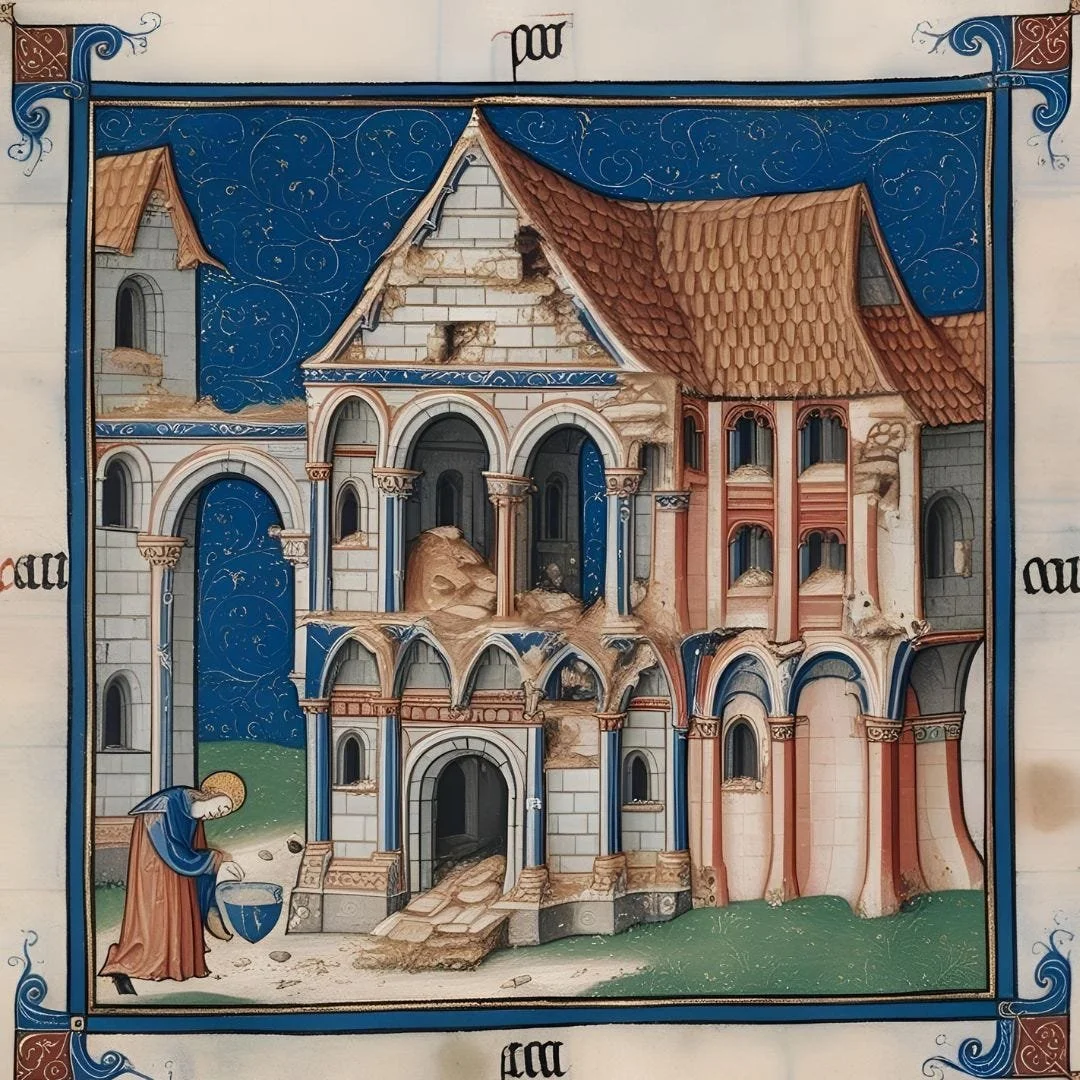Authenticity and Preservation in Conservation Discourse: Rethinking Architectural Integrity
Introduction
In the realm of architectural conservation, the concept of authenticity, the desire to preserve a building in its original form, has often been at the core of debates. Though, this traditional view has faced challenges as conservation practices evolve to accommodate contemporary needs and perspectives. As scholars like Dexya (2018) suggest, the intersection of authenticity, functional adaptation, and preservation raises critical questions about how we define architectural integrity and the extent to which we can, and should, alter historical buildings.
The Tension Between Preservation and Authenticity
Preservation and restoration has traditionally sought to retain the original materials and design of a building, emphasising authenticity as the retention of physical form (Buchli, 2013). This has often meant that any alterations to the building are seen as diminishing its historical value. Dexya (2018) critiques this strict adherence to material preservation, arguing that it fails to account for a building’s evolving role in modern society. Dexya suggests that while preserving the physical state of a structure is important, we must also recognize that buildings, much like cultures, evolve over time and may require adaptations to remain functional and relevant.
Supporting this viewpoint, Webb (2004) contends that a building's authenticity is not static, but dynamic, and should consider the changes it undergoes throughout its life. Webb's argument suggests that
"authenticity is not a static condition but a dynamic process,” (Webb, 2004).
In this view, the preservation of historical structures must involve a balance between maintaining their cultural significance and accommodating the needs of contemporary society.
Therefore, the tension between strict preservation and modern adaptation suggests that a rethinking of architectural authenticity is necessary. Buildings are not static relics but living, evolving entities that may require change to fulfil their societal roles. The value of a building lies not just in its original form but in its ongoing relevance to the community it serves.
Reinterpreting Authenticity in a Changing Context
As Dexya (2018) notes, a more flexible understanding of authenticity would allow conservationists to integrate modern technologies and materials without compromising the historical essence of a building. This flexible approach challenges the idea that authenticity is synonymous with stasis. Rather, authenticity should encompass a building’s continued relevance and adaptability, rather than merely preserving it in a frozen, original state.
This argument is echoed by Morris (1991), who argues that historical value is not simply embedded in a building's original construction but also in the subsequent modifications it undergoes. Morris highlights that
“a building’s value is in the layers of history it represents, not just its initial form” (Morris, 1991).
This view acknowledges that alterations, whether through repair, restoration, or adaptation, are part of a building’s historical narrative and contribute to its authenticity.
These arguments indicate that authenticity in conservation should not be confined to an unaltered physical state but should also account for a building’s capacity to evolve while maintaining its cultural identity. This broader definition of authenticity, as both a temporal and functional condition, provides a more inclusive framework for conservation that incorporates change as an integral aspect of architectural heritage.
The Ethical Implications of Preservation: A Cultural and Moral Dilemma
The ethics of preservation further complicate this discourse, particularly when decay is involved. As Buchli (2013) notes, decaying buildings often evoke feelings of abjection, a visceral reaction to the perceived threat posed by deteriorating forms. These feelings are tied to cultural attitudes towards decay, which are often associated with neglect or moral decay (Buchli, 2013). In this sense, preservation becomes an ethical question: can we preserve decay, and should we? Is the decision to preserve decay itself an act of cultural or moral significance?
The idea of preserving decay challenges prevailing cultural norms, which often equate decay with failure. Though, Minkjan (2013) argues that such societal repulsion overlooks the historical and cultural value embedded in decaying forms. Minkjan suggests that decay should not be viewed merely as a sign of deterioration but as an inevitable and meaningful part of a building's lifespan. By preserving a decaying structure, we engage with its complete historical narrative, embracing both its original state and its eventual degradation.
Therefore, the ethical dimension of preservation invites a broader understanding of decay as an integral part of the building’s authenticity. The decision to preserve decay, instead of erasing or restoring it, can be seen as an ethical act that acknowledges the passage of time and the layers of history embedded within the structure.
Conclusion; Toward a Holistic Approach to Preservation
In conclusion, the debate surrounding authenticity and preservation calls for a more nuanced and flexible understanding of architectural conservation. As Dexya (2018), Morris (1991), and Webb (2004) suggest, authenticity should not be viewed as a fixed condition but as a dynamic process that encompasses both historical and functional change. This evolving understanding allows us to rethink how buildings can be preserved while remaining relevant to contemporary society.
Conclusively, the ethical considerations surrounding decay challenge Architects and Designers to rethink how they approach imperfection in architecture. Embracing decay as part of a building’s narrative, they can craft a more inclusive and sustainable model of conservation that values both historical authenticity and modern necessity. This approach fosters a more holistic view of architectural heritage, one that celebrates the dynamic and evolving nature of built environments.
References
Buchli, V. (2013). Decay and the Architecture of Abjection: A Cultural Approach. Oxford University Press.
Dexya, J. (2018). The Preservation Debate: Authenticity, Change, and Continuity in Architecture. University Press.
Minkjan, K. (2013). Cultural Attitudes Toward Decay in Architectural Preservation: A Critical Analysis. Routledge.
Morris, R. (1991). Architectural Conservation and the Preservation of Memory. Harper & Row.
Webb, D. (2004). Conservation, Continuity, and Change: Rethinking Authenticity in Architecture. Cambridge University Press.
